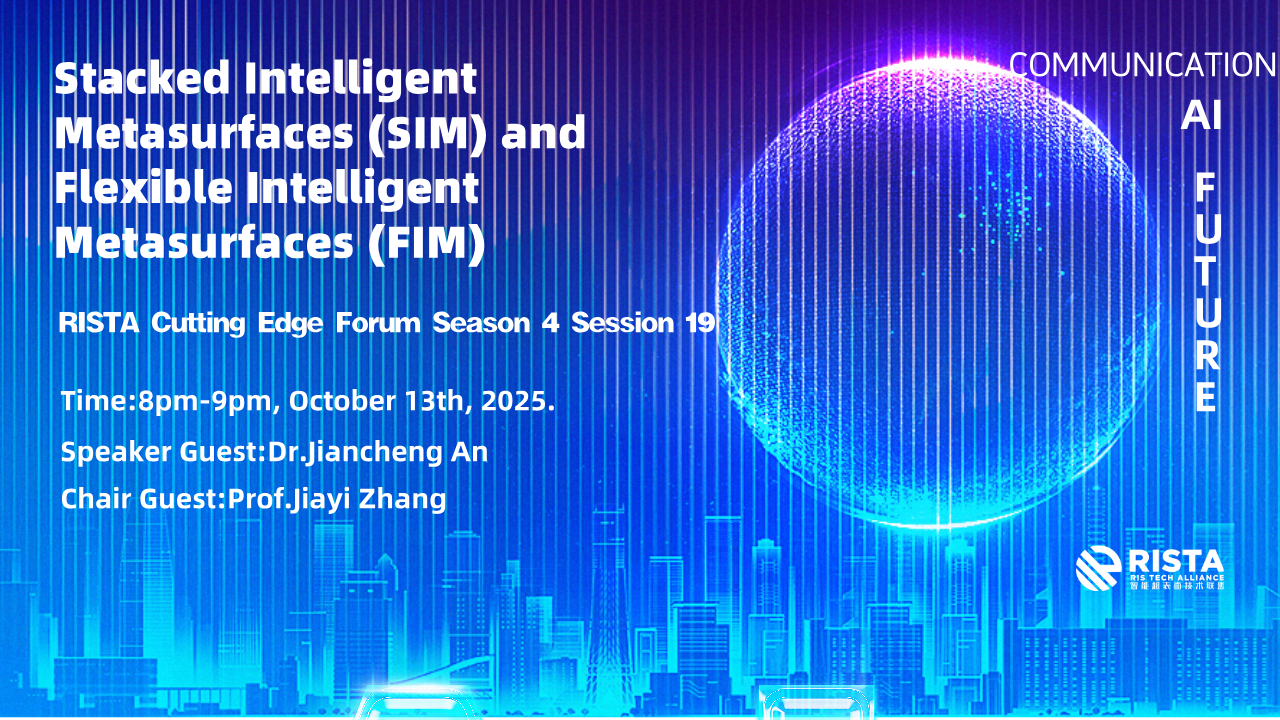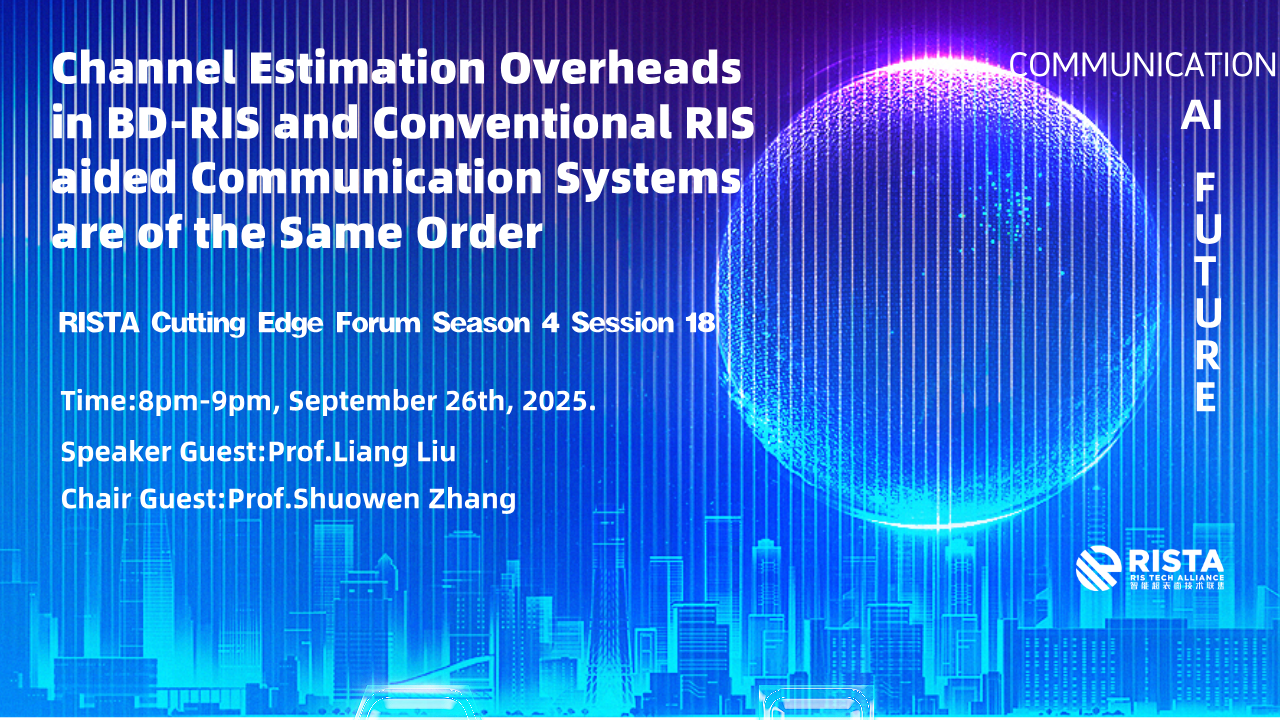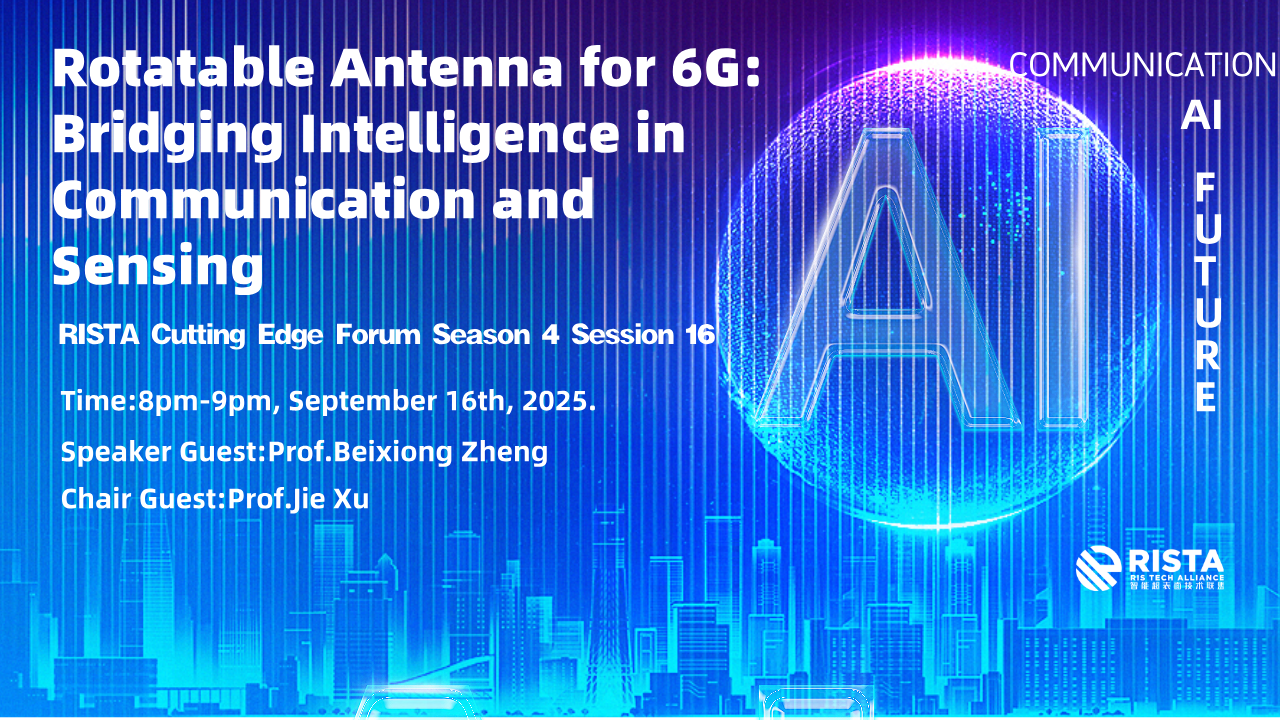
RIS CUTTING EDGE FOURM
Graph neural networks for wireless networks: Graph representation, architecture and evaluation
基于图神经网络的无线网络资源优化技术

Graph neural networks for wireless networks: Graph representation, architecture and evaluation
- RISTA CUTTING EDGE FORUM Season 4 Session 8
- Time:10am-11am, July 27th, 2025
- Speaker guest:Prof.Yang Lu
- Chair guest:Prof.Gaofeng Pan

Lu Yang is an Associate Professor and Doctoral Supervisor at the School of Computer Science and Technology, Beijing Jiaotong University. He engages in research on resource optimization and machine learning methods for mobile communication systems. He has published over 80 high-level academic papers, including more than 30 papers as the first/corresponding author in IEEE JSAC and IEEE Transactions journals. He has applied for 12 invention patents (3 authorized and 9 pending). He has presided over more than 10 projects. He has been selected into the Postdoctoral Innovation Talent Support Program and Beijing Nova Program. As a participant, he won the First Prize of the Science and Technology Progress Award of the China Communications and Transportation Association and the Second Prize of the Science and Technology Progress Award of the China Urban Rail Transit Association. He serves as a Youth Editorial Board Member of Journal of Internet of Things. He was awarded the 2023 IEEE WCL Exemplary Reviewer. He is a Youth Member of the Communication Branch of the Chinese Institute of Electronics, as well as a Senior Member of the Chinese Institute of Electronics and a Senior Member of the China Institute of Communications.





